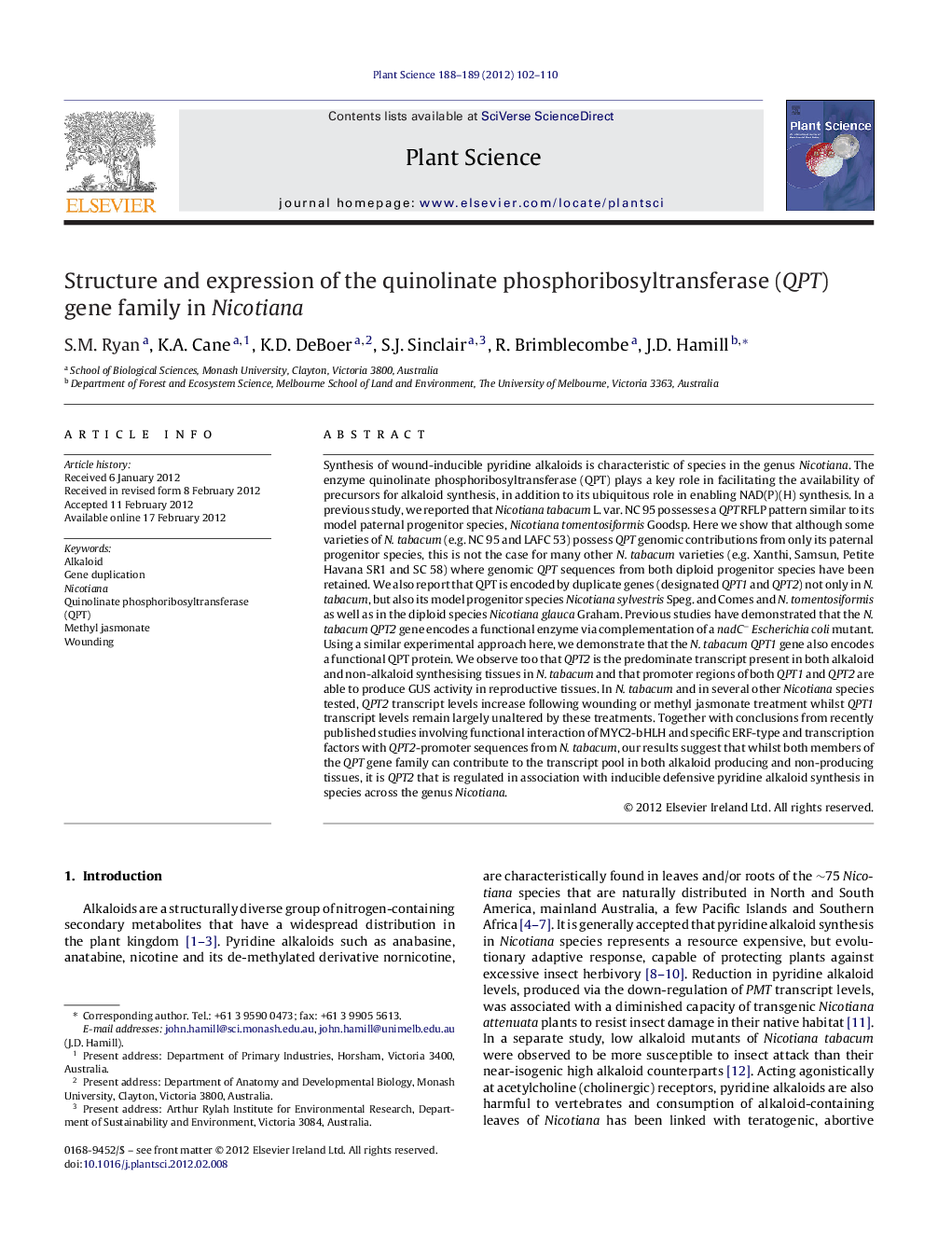| کد مقاله | کد نشریه | سال انتشار | مقاله انگلیسی | نسخه تمام متن |
|---|---|---|---|---|
| 2017375 | 1542090 | 2012 | 9 صفحه PDF | دانلود رایگان |

Synthesis of wound-inducible pyridine alkaloids is characteristic of species in the genus Nicotiana. The enzyme quinolinate phosphoribosyltransferase (QPT) plays a key role in facilitating the availability of precursors for alkaloid synthesis, in addition to its ubiquitous role in enabling NAD(P)(H) synthesis. In a previous study, we reported that Nicotiana tabacum L. var. NC 95 possesses a QPT RFLP pattern similar to its model paternal progenitor species, Nicotiana tomentosiformis Goodsp. Here we show that although some varieties of N. tabacum (e.g. NC 95 and LAFC 53) possess QPT genomic contributions from only its paternal progenitor species, this is not the case for many other N. tabacum varieties (e.g. Xanthi, Samsun, Petite Havana SR1 and SC 58) where genomic QPT sequences from both diploid progenitor species have been retained. We also report that QPT is encoded by duplicate genes (designated QPT1 and QPT2) not only in N. tabacum, but also its model progenitor species Nicotiana sylvestris Speg. and Comes and N. tomentosiformis as well as in the diploid species Nicotiana glauca Graham. Previous studies have demonstrated that the N. tabacum QPT2 gene encodes a functional enzyme via complementation of a nadC−Escherichia coli mutant. Using a similar experimental approach here, we demonstrate that the N. tabacum QPT1 gene also encodes a functional QPT protein. We observe too that QPT2 is the predominate transcript present in both alkaloid and non-alkaloid synthesising tissues in N. tabacum and that promoter regions of both QPT1 and QPT2 are able to produce GUS activity in reproductive tissues. In N. tabacum and in several other Nicotiana species tested, QPT2 transcript levels increase following wounding or methyl jasmonate treatment whilst QPT1 transcript levels remain largely unaltered by these treatments. Together with conclusions from recently published studies involving functional interaction of MYC2-bHLH and specific ERF-type and transcription factors with QPT2-promoter sequences from N. tabacum, our results suggest that whilst both members of the QPT gene family can contribute to the transcript pool in both alkaloid producing and non-producing tissues, it is QPT2 that is regulated in association with inducible defensive pyridine alkaloid synthesis in species across the genus Nicotiana.
► QPT genes duplicated before speciation in Nicotiana and both remain functional.
► Wound stress elevates QPT2 but not QPT1 transcript in alkaloid-producing tissues.
► Many tobacco strains possess QPT genes from N. tomentosiformis and N. sylvestris.
► Some tobacco strains lack N. sylvestris QPT but have extra N. tomentosifomis QPT genes.
Journal: Plant Science - Volumes 188–189, June 2012, Pages 102–110